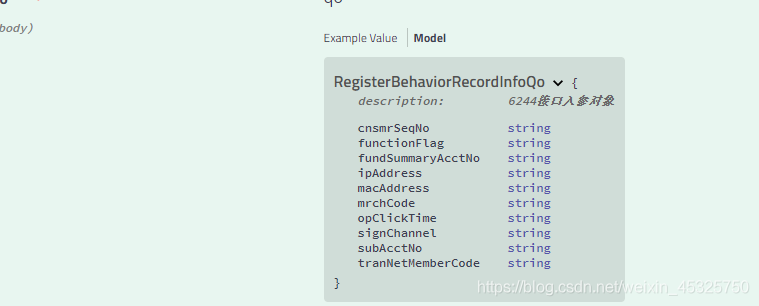这篇文章主要为大家详细介绍了java实现周期性执行定时任务,文中示例代码介绍的非常详细,具有一定的参考价值,感兴趣的小伙伴们可以参考一下
最近是遇到一个设备在线离线的判定问题,设计是每个多长时间(常规的定时任务)检测一次设备是否在前,当检测到里离线时,我们不能立马判断为离线,而是要在重试多测几次,只要一次成功就返回判定为在线,多次都不成功侧是离线,我这里相当了用ScheduledThreadPoolExecutor来实现,如有不足还请提出。如下:
ScheduledThreadPoolExecutor的介绍:
ScheduledThreadPoolExecutor,它可另行安排在给定的延迟后运行命令,或者定期执行命令。需要多个辅助线程时,或者要求 ThreadPoolExecutor 具有额外的灵活性或功能时,此类要优于Timer。
ScheduledThreadPoolExecutor的使用详解
当程序需要用到一个定时器处理问题的时候,并且需要处理的频率是很快的,这就需要一个稳定的定时器来保证数据的长久进行。ScheduledThreadPoolExecutor这个类就是个很好的选择。正常情况下,定时器我们都是用Timer和TimerTask这两个类就能完成定时任务,并且设置延长时间和循环时间间隔。
ScheduledThreadPoolExecutor也能完成Timer一样的定时任务,并且时间间隔更加准确。
误差说明:
我在后台程序看看一下Timer执行程序是有可能延迟1、2毫秒,如果是1秒执行一次的任务,1分钟有可能延迟60毫秒,一小时延迟3600毫秒,相当于3秒,实际用户看不出什么区别。 但是,如果我的程序需要每40毫秒就执行一次任务,如果还是有1、2毫秒的误差,1秒钟就有25毫秒的误差,大概40秒就有1秒的误差,十几分钟就有十几秒的误差,这对UI显示来说是延迟非常严重的了。 而我用ScheduledThreadPoolExecutor来做40毫秒的间隔任务,一般十几分钟才有1秒多的误差,这个还是能接受的。 这也是我用ScheduledThreadPoolExecutor这个类的原因。
使用Timer和TimerTask存在一些缺陷:
1.Timer只创建了一个线程。当你的任务执行的时间超过设置的延时时间将会产生一些问题。
2.Timer创建的线程没有处理异常,因此一旦抛出非受检异常,该线程会立即终止。
JDK 5.0以后推荐使用ScheduledThreadPoolExecutor。该类属于Executor Framework,它除了能处理异常外,还可以创建多个线程解决上面的问题
Timer和TimerTask的使用 :
这里就不做过多的描述了,重点在ScheduledThreadPoolExecutor。
Timer timer = new Timer();
timer.schedule(new TimerTask() {
@Override
public void run() {
log.e("time:");
}
}, 2000, 40);
//2000表示第一次执行任务延迟时间,40表示以后每隔多长时间执行一次run里面的任务ScheduledThreadPoolExecutor的使用:
import java.util.HashSet;
import java.util.List;
import java.util.Set;
import java.util.concurrent.ScheduledThreadPoolExecutor;
import java.util.concurrent.TimeUnit;
import java.util.concurrent.atomic.AtomicInteger;
/**
* 设备在线延时检查检查
*/
@Slf4j
public class DelayedCheckDeviceSchedule {
public static final Integer CONNECT_TIME_OUT = 10000;
//引用的业务层
private ITblBaseService baseService = SpringContextHolder.getBean(ITblBaseService .class);
private ScheduledThreadPoolExecutor scheduledThreadPoolExecutor = null;
/**
* 需要延时检查的设备状态的设备id集合
*/
public static Set<String> deviceSet = new HashSet<>();
/**
* 当前执行点
*/
private AtomicInteger currentAtomicInteger = new AtomicInteger(1);
/**
* 初始化任务
* @param delay 延迟几秒执行
* @param checkCount 需要检测的次数
* @param deviceId 设备Id
* @param deviceType 设备类型
* @return
*/
public boolean init(long delay, int checkCount, String deviceId, String deviceType) {
log.info("第一次初始化时间"+deviceId+":"+System.currentTimeMillis());
if (deviceSet.add(deviceId) && deviceConnectModel!=null) {
this.scheduledThreadPoolExecutor = new ScheduledThreadPoolExecutor(4);
this.scheduledThreadPoolExecutor.schedule(new Runnable() {
@Override
public void run() {
executor(delay, checkCount, deviceId, deviceType);
}
}, delay, TimeUnit.SECONDS);
return true;
}
return false;
}
/**
* 执行体
*/
private void executor(long delay, int checkCount, String deviceId, String deviceType) {
log.info("第"+currentAtomicInteger.get()+"执行时间"+deviceId+":"+System.currentTimeMillis());
if (deviceSet.contains(deviceId) && currentAtomicInteger.get() < (checkCount+1)) {
//执行逻辑
//当满足条件时,停止任务
if(currentAtomicInteger.get()==checkCount){
//需要处理的逻辑
//停止任务
this.scheduledThreadPoolExecutor.shutdownNow();
deviceSet.remove(deviceId);
}else {
//下一次执行
currentAtomicInteger.getAndIncrement();
this.scheduledThreadPoolExecutor.schedule(new Runnable() {
@Override
public void run() {
executor(delay, checkCount, deviceId, deviceType);
}
}, delay, TimeUnit.SECONDS);
}
} else {
this.scheduledThreadPoolExecutor.shutdownNow();
this.scheduledThreadPoolExecutor = null;
}
}
/**
* 停止检测任务
* @param deviceId
* @return
*/
public static boolean stop(String deviceId) {
return deviceSet.remove(deviceId);
}
}在需要周期性检查的时候引入:
DelayedCheckDeviceSchedule delayedCheckDeviceSchedule = new DelayedCheckDeviceSchedule();
delayedCheckDeviceSchedule.init(10, 3, panModel.getDeviceId(), "pan");以上就是本文的全部内容,希望对大家的学习有所帮助,也希望大家多多支持编程学习网。
本文标题为:java实现周期性执行(定时任务)


基础教程推荐
- 使用Java和WebSocket实现网页聊天室实例代码 2024-02-25
- JavaWeb 实现验证码功能(demo) 2024-04-14
- Java+mysql实现学籍管理系统 2023-03-16
- Java编写实现窗体程序显示日历 2023-01-02
- JSP 动态树的实现 2023-12-17
- 运用El表达式截取字符串/获取list的长度实例 2023-08-01
- 深入理解约瑟夫环的数学优化方法 2024-03-07
- Java中EnvironmentAware 接口的作用 2023-01-23
- springboot下使用shiro自定义filter的个人经验分享 2024-02-27
- 是否适合从javabean类更新数据库? 2023-11-04

















